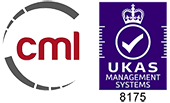Routes: Planning, Tracking and Considerations for Fleet Managers
As a fleet manager, ensuring your fleet are always taking the most time- and fuel-efficient routes possible to all of their drop-off points is absolutely vital. While it can be tempting to simply let your drivers have the freedom to take whatever route they like, this can be a costly mistake to make in the long run.
Why Track Your Fleet’s Route?
Simply put, ensuring your drivers are always using the most fuel- and time-efficient routes available to them will save you a considerable amount of money in the long run. Whilst it’s always beneficial to know exactly where your fleet gets to whilst on the road, the main reason for tracking your fleet’s movement is to ensure you’re being as cost-effective as possible.
If your fleet have regular delivery locations, tracking your drivers’ routes can be extremely beneficial. You could encourage your drivers to try several different routes at different times to test if there is a perfect time or day of the week to avoid traffic congestion; this could potentially save your fleet a considerable amount of time and fuel.
Pair Up With a Fuel Management System
If you’re looking to maximise the potential time and cost savings for your fleet from route planning and tracking, pairing up these techniques with a fuel management system can save your fleet a sizeable amount of time and money over time.
A fuel management system will help you track exactly how much fuel has been consumed for any given trip, which you can compare to your route tracking system. If you’re finding a particular route is viewed as the shortest and therefore most efficient, but your fleet appear to be consuming a large amount of fuel, it may be worth looking into taking another route. You could also ask your driver if the original route is prone to traffic congestion or involves a lot of stopping and starting.
Using route tracking in tandem with a fuel management system is a sure way to ensure your fleet is running at the most cost-effective rate possible.
What to do When Things Go Wrong
Whilst it is rare, delivery errors do occur from time to time. It’s always good to have a plan of action when this happens, and all drivers should be aware of what this protocol entails. Here’s our suggestion on how best to approach this type of situation.
First and foremost, it’s always best to inform the customer as early as possible that something has gone wrong and that there may be a delay in their delivery. Honesty definitely is the best policy; be upfront about the error and suggest several options, allowing the customer to decide what works best for them.
In terms of rectifying the error, you should always encourage your fleet to minimise the knock-on effect on other customers. If the error is spotted early enough, the driver should immediately go back to the incorrect drop-off site and collect the goods. By doing this, you will minimise the amount of fuel and time wasted.
If the error is spotted later in the route, it may not be time- or fuel-efficient to go back and collect the goods straight away. In this case, your drivers should be encouraged to collect the goods from the incorrect drop-off site on the way back to the fleet depot, or at a point which minimises fuel and time-wastage on the delivery route.
If a situation like this does arise for your fleet, you should always consider that it’s best to keep other customers on the route happy by delivering on time if possible. It’s much better to have one disgruntled customer than a whole host of them because of one mistake.
Ensuring that a fleet runs as efficiently as possible, whilst also catering to the needs of customers can be difficult. But by making sure your drivers are well-versed in route planning as well as contingency protocols, your fleet will have the best chance of saving time as well as money. Using effective route planning alongside a fuel management system will ensure that your fleet are as cost-effective as possible.









